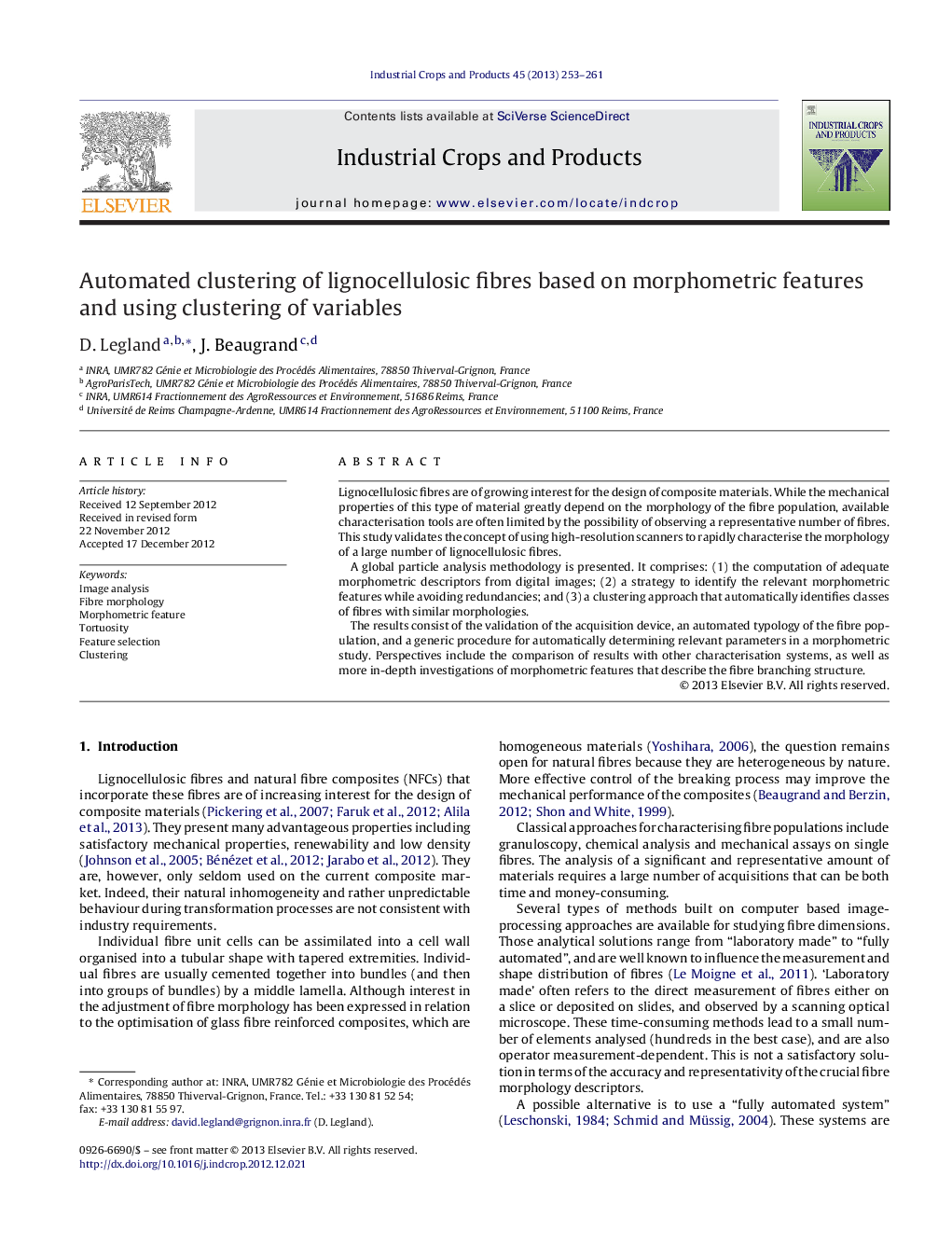| Article ID | Journal | Published Year | Pages | File Type |
|---|---|---|---|---|
| 4514045 | Industrial Crops and Products | 2013 | 9 Pages |
Lignocellulosic fibres are of growing interest for the design of composite materials. While the mechanical properties of this type of material greatly depend on the morphology of the fibre population, available characterisation tools are often limited by the possibility of observing a representative number of fibres. This study validates the concept of using high-resolution scanners to rapidly characterise the morphology of a large number of lignocellulosic fibres.A global particle analysis methodology is presented. It comprises: (1) the computation of adequate morphometric descriptors from digital images; (2) a strategy to identify the relevant morphometric features while avoiding redundancies; and (3) a clustering approach that automatically identifies classes of fibres with similar morphologies.The results consist of the validation of the acquisition device, an automated typology of the fibre population, and a generic procedure for automatically determining relevant parameters in a morphometric study. Perspectives include the comparison of results with other characterisation systems, as well as more in-depth investigations of morphometric features that describe the fibre branching structure.
Graphical abstractFigure optionsDownload full-size imageDownload as PowerPoint slideHighlights► Lignocellulosic fibres are widely used for design of composite materials. ► Mechanical properties strongly depend on fibres morphology. ► Morphometric features are extracted using automated image analysis. ► Relevant features are identified using clustering of variables. ► Clustering reveals populations of fibres with homogeneous morphology.
